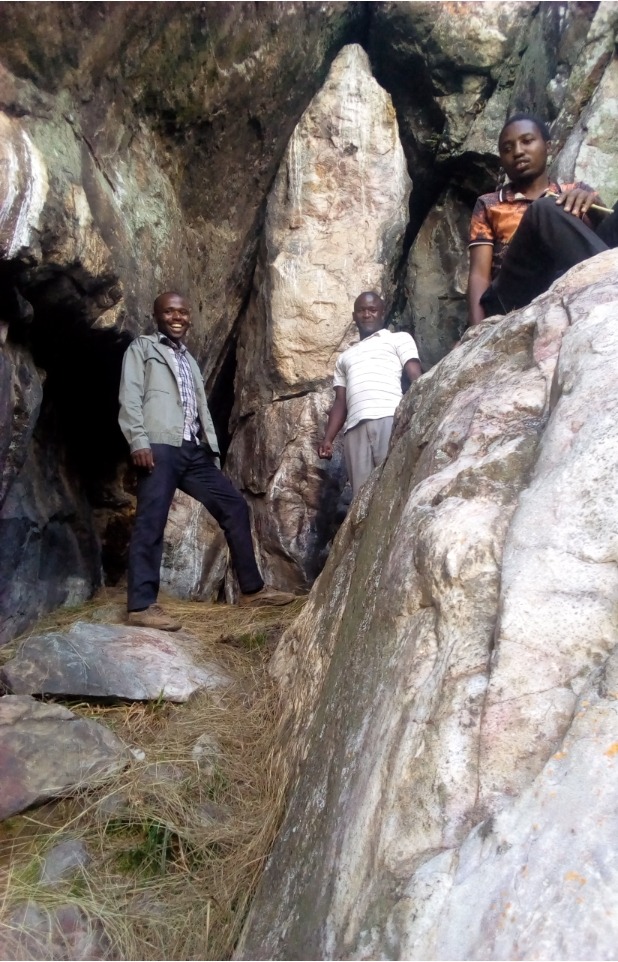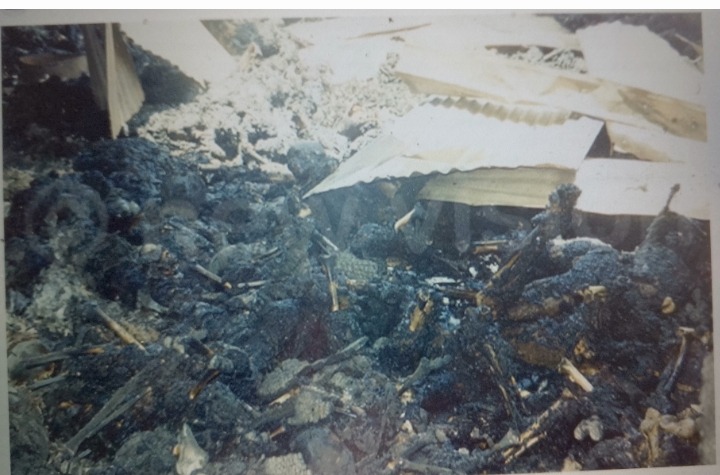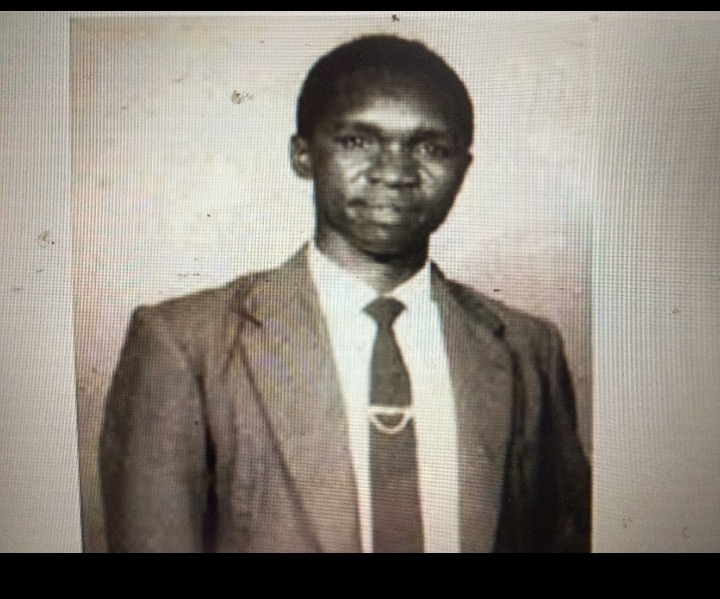Your cart is currently empty!
Unveiling the Mysteries of Nyabugoto Cave: The Kibwetere Cult Church History in Uganda

Contents
- 0.1 Introduction
- 0.2 The Spiritual Heart of Nyabugoto Cave
- 0.3 The Kanungu Inferno: A Dark Chapter
- 0.4 Cultural and Geological Tapestry
- 1 The Kanungu Massacre: The Enigma of Joseph Kibwetere
- 1.1 Who Was Joseph Kibwetere?
- 1.2 The Rise of the Cult
- 1.3 The Massacre
- 1.4 The Aftermath and Unanswered Questions
- 1.5 The Local Flora and Fauna
- 1.6 Socio-economic Aspects and Local Life
- 1.7 Potential for Tourism Development
- 1.8 Conservation Efforts and Challenges
- 1.9 Prominent Local Figures and Infrastructure
- 1.10 Conclusion: A Beacon of Cultural and Natural Heritage
- 2 FAQs on the mysteries of Nyabugoto cave and the history of Kibwetere cult
Introduction

Nestled in the serene and remote landscapes of Kaharaa village, Kacence parish, within the Nyakishenyi sub-county of Rukungiri district in southwestern Uganda, lies Nyabugoto Cave. This natural marvel is not only a testament to the area’s geological splendor but also a site steeped in rich cultural and spiritual history. The cave’s history is intertwined with the infamous “Movement for the Restoration of the Ten Commandments,” led by Joseph Kibwetere and Credonia Mwerinde, which culminated in the tragic Kanungu massacre. This blog explores the captivating story of Nyabugoto Cave, its spiritual significance, and its potential as a beacon of cultural and natural heritage. Plus we shall delve into the history of the Kanungu Massacre and the whereabouts of Joseph Kibwetere and Keledonia Mwerinde.
The Spiritual Heart of Nyabugoto Cave
In the late 1990s, Nyabugoto Cave became a focal point for spiritual gatherings. Elderly women from the local community would congregate here to worship, drawn by the cave’s serene and mystical ambiance. These gatherings, marked by fervent prayers and rituals, set the stage for the rise of the “Movement for the Restoration of the Ten Commandments of God.” Joseph Kibwetere and Credonia Mwerinde led this movement, which promised spiritual renewal and strict adherence to the Ten Commandments. Local resident Nasiima Elias reflects on this period, stating, “As people arrived in their thousands, their collective fervor birthed a new church on this sacred ground.”
The Kanungu Inferno: A Dark Chapter

Image of the remains of the Kanungu massacre
The Kanungu inferno, which occurred on March 17, 2000, is one of the darkest chapters in Uganda’s history. The cult’s activities culminated in a mass fire that claimed the lives of hundreds of followers. As the congregation grew, the limited space within the cave’s steep terrain became inadequate, prompting the leaders to seek a larger site. This search led them to Kanungu, where the tragic events of the massacre unfolded. Besigye Angelo, a local resident of Kaharaa who lost two siblings in the inferno, recounts the situation: “As the congregation grew, the cave’s limited space on steep terrain became inadequate, prompting a search for a larger site.” This search led to Kanungu, where the cult’s narrative reached a tragic end.
Cultural and Geological Tapestry
Nyabugoto Hill, the location of the cave, is characterized by its rocky landscape, dotted with deep holes and a specially carved stone that bears an uncanny resemblance to Mother Mary’s back. This unique geological formation adds to the cave’s allure, making it not just a spiritual site but also a geological wonder. The hill is strategically situated between the Nyakishenyi Catholic Parish and the Nyakisoroza Archdeaconry Church of Uganda, enhancing its cultural significance.
The Kanungu Massacre: The Enigma of Joseph Kibwetere

The Kanungu Massacre remains one of the most tragic and mysterious events in Uganda’s recent history. On March 17, 2000, over 800 followers of the “Movement for the Restoration of the Ten Commandments of God” perished in a horrific inferno in Kanungu, a remote town in southwestern Uganda. This mass suicide-murder shocked the nation and the world, drawing attention to the enigmatic figure behind the cult, Joseph Kibwetere.
Who Was Joseph Kibwetere?
Joseph Kibwetere was a charismatic but controversial leader. Originally a Roman Catholic, he became increasingly disillusioned with the church and claimed to have received visions from the Virgin Mary. These visions reportedly urged him to restore the Ten Commandments and prepare for the end of the world. Kibwetere, along with Credonia Mwerinde, a former prostitute who also claimed to have received divine messages, founded the “Movement for the Restoration of the Ten Commandments of God” in the 1980s.
The cult emphasized strict adherence to the Ten Commandments, and its teachings were characterized by apocalyptic predictions. Kibwetere and Mwerinde convinced their followers that the end of the world was imminent and that only those who strictly followed their teachings would be saved.
The Rise of the Cult
The cult initially operated in Nyabugoto Cave in Rukungiri district, where it attracted a significant following. The cave’s mystical ambiance and the fervent spiritual activities conducted there contributed to the cult’s growth. As the number of followers increased, the limited space within the cave became inadequate, prompting the leaders to seek a larger site in Kanungu.
By the late 1990s, the cult had established a substantial presence in Kanungu, with followers donating their properties and abandoning their previous lives to live communally. The leaders imposed strict rules, including fasting, abstinence, and rigorous prayer schedules. Communication with the outside world was heavily restricted, creating an insular and tightly controlled environment.
The Massacre

As the predicted apocalypse failed to materialize, internal tensions within the cult began to rise. Kibwetere and Mwerinde responded by setting a final date for the end of the world—March 17, 2000. On this day, followers were instructed to gather in a locked church building in Kanungu, where they believed they would be taken to heaven.
Instead, a deadly fire was set, consuming the building and killing all those inside. The charred remains of over 500 people were discovered, including men, women, and children. Investigations revealed that the doors and windows had been nailed shut, preventing any escape.
The Aftermath and Unanswered Questions
The Kanungu Massacre left many unanswered questions. The bodies of Kibwetere and Mwerinde were never conclusively identified, leading to speculation that they may have escaped. The exact motives behind the massacre remain unclear, though it is widely believed that the leaders orchestrated the event to prevent a rebellion among disillusioned followers.
In the wake of the massacre, the Ugandan government faced criticism for failing to monitor and intervene in the cult’s activities. The tragedy highlighted the dangers of unchecked religious extremism and the vulnerability of people seeking spiritual guidance.
The Local Flora and Fauna
The isolation of Nyabugoto Cave has made it a sanctuary for various species. The rocky crevices and lush vegetation provide perfect hiding spots for bats, lizards, and occasional snakes, making it an interesting study site for ecologists and nature enthusiasts. The ecological balance maintained here is a testament to the cave’s untouched natural beauty, attracting those interested in studying its unique biodiversity.
Socio-economic Aspects and Local Life
Today, the surroundings of Nyabugoto Cave paint a picture of rural Ugandan life. Locals engage in farming, herding, and collecting firewood—practices that have sustained generations. On the economic front, activities such as lumbering, sand mining, and stone quarrying provide employment but also pose challenges to environmental conservation. Balancing economic needs with environmental protection remains a crucial task for the local community.
Potential for Tourism Development
Recognizing Nyabugoto Cave as a potential tourist destination could bring numerous benefits. By developing sustainable tourism practices, the government could help preserve this unique site while boosting local economies. Developing visitor centers, guided tour services, and educational programs about the site’s history and natural environment could attract tourists from around the globe. Such initiatives would not only provide economic opportunities for the local community but also ensure the cave’s preservation for future generations.
Conservation Efforts and Challenges
The preservation of Nyabugoto Cave as a historical and natural site presents both opportunities and challenges. Efforts to conserve the site must balance environmental protection with the needs of the local community. Initiatives could include regulating access to the cave, promoting eco-friendly tourism practices, and involving local communities in conservation efforts to ensure they benefit from the site’s preservation. Collaborative efforts between the government, local authorities, and conservation organizations are essential to protect this invaluable cultural and natural asset.
Prominent Local Figures and Infrastructure
The region is home to several notable figures, including Dr. Johnson Byabashaija, Commissioner General of Uganda Prisons, and Charles Mukacara, an entrepreneur. Their presence signifies the area’s importance and potential for further development. Additionally, the proximity to Nyakishenyi sub-county headquarters suggests an infrastructure capable of supporting increased tourism. Improved infrastructure, such as better roads and communication networks, would facilitate access to the cave and enhance the visitor experience.
Conclusion: A Beacon of Cultural and Natural Heritage
Nyabugoto Cave is more than just a geological formation; it is a repository of cultural narratives and natural beauty. Its preservation as a sacred site and tourist attraction would serve as a tribute to its historical significance and as a source of educational and economic opportunities for future generations. As stewards of such a precious asset, it is incumbent upon both the local and national authorities to ensure that Nyabugoto Cave remains a beacon for pilgrims, historians, and nature lovers alike. By developing sustainable tourism practices and engaging in conservation efforts, we can protect this unique site and honor its rich legacy.
FAQs on the mysteries of Nyabugoto cave and the history of Kibwetere cult
1. What is the history of Nyabugoto Cave? Nyabugoto Cave, located in the Nyakishenyi sub-county of Rukungiri district, Uganda, is known for its spiritual significance and its association with the “Movement for the Restoration of the Ten Commandments,” led by Joseph Kibwetere and Credonia Mwerinde.
2. How did the Kanungu massacre happen? The Kanungu massacre occurred on March 17, 2000, when hundreds of followers of the cult were killed in a mass fire in Kanungu, Uganda. The cult, led by Joseph Kibwetere, believed in an imminent apocalypse and strict adherence to the Ten Commandments.
3. What are the cultural and geological features of Nyabugoto Cave? Nyabugoto Cave is situated on a rocky hill with deep holes and a carved stone resembling Mother Mary’s back. The hill is strategically located between the Nyakishenyi Catholic Parish and the Nyakisoroza Archdeaconry Church of Uganda, adding to its cultural significance.
4. How can Nyabugoto Cave be developed as a tourist destination? Developing Nyabugoto Cave as a tourist destination involves creating visitor centers, guided tour services, and educational programs about the site’s history and natural environment. Sustainable tourism practices and improved infrastructure are essential for attracting tourists and preserving the site.
5. What conservation efforts are needed for Nyabugoto Cave? Conservation efforts for Nyabugoto Cave include regulating access, promoting eco-friendly tourism practices, and involving local communities in conservation activities. Collaboration between the government, local authorities, and conservation organizations is crucial for protecting the site.
6. What was the Movement for the Restoration of the Ten Commandments of God? The Movement for the Restoration of the Ten Commandments of God was a religious sect in Uganda founded by Joseph Kibwetere and his associates. The sect emphasized strict adherence to the Ten Commandments and predicted an imminent apocalypse.
7. Why did Joseph Kibwetere and the sect leaders believe in an apocalypse? The sect’s leaders, including Joseph Kibwetere, believed that the world would end at the turn of the millennium. They claimed that their followers needed to purify themselves through strict adherence to the Ten Commandments to be saved.
8. Have any of the sect leaders been found or prosecuted? While some of the sect’s leaders were arrested and prosecuted, Joseph Kibwetere and a few others remain missing. Efforts to locate them have been ongoing but have yielded no definitive results.
9. What has been done to prevent similar tragedies in Uganda? In the wake of the Kanungu massacre, the Ugandan government introduced stricter regulations on religious organizations. These measures aim to prevent the rise of dangerous sects and protect citizens from falling victim to manipulative and destructive ideologies.
Comments
10 responses to “Unveiling the Mysteries of Nyabugoto Cave: The Kibwetere Cult Church History in Uganda”
Well done Andrew! Thank you for this good piece.
The inferno in Kaanuungu was an early sign of what would happen in the next millennium.
Since 2000, there’s been rapid and quite dramatic changes in religion here in Uganda especially in Christianity.
Nowadays, there are so many self-proclaimed “men of God”, false prophets, churches in temporary structures are everywhere, mention it.
Church business is among the most booming businesses in Uganda today. So, we could already be in the aforementioned apocalypse!
welcome. It is true such church cults still exist. even in the cave itself, there are signs people visit for worship up to now.
I want to comment on Nyabugoto Rock, in 1960s to 1970s some people especially women used to see Mother Mary around the Rock, among the women was Mrs Kyekorire and Mother of late Jerome Bihugweho but in 1980s some pple started getting offerings which was not good later kibwetere came in
Oh, sure? some people claim that they saw mother mary in the 90s.
having arrived in Nyakishenyi for the first time, i had to visit Nyabugoto cave. i wanted to see the stone that resembled mother mary. indeed, i saw a well curved stone like the back of Mary. and do you know? people still worship from that cave.
I myself was part of the fraction of Kibwetere branch in Nyakishenyi sub-county Nyakisoroza trading centre, we had our leader the daughter of late Katakara from Shogashoga, Tumuramye Edward s/o Rwamushamba and others.
Sister Caledonia and Fr Kataribabo visited us and we had overnight prayers in Nyabugoto cave where mother Mary came and talked to us through Sister Caledonia.
I have a lot of stories to tell about how we started and how we ended.I thank you for sharing with the world.
You have rekindled the speculations of the end of the world by some religious sects in Uganda in the year2000.
Did the cult leaders survive or do we have any surviver?
Andrew, link up with NCDC.this information needs to enriched for studies
sure? will get in touch!
Leave a Reply